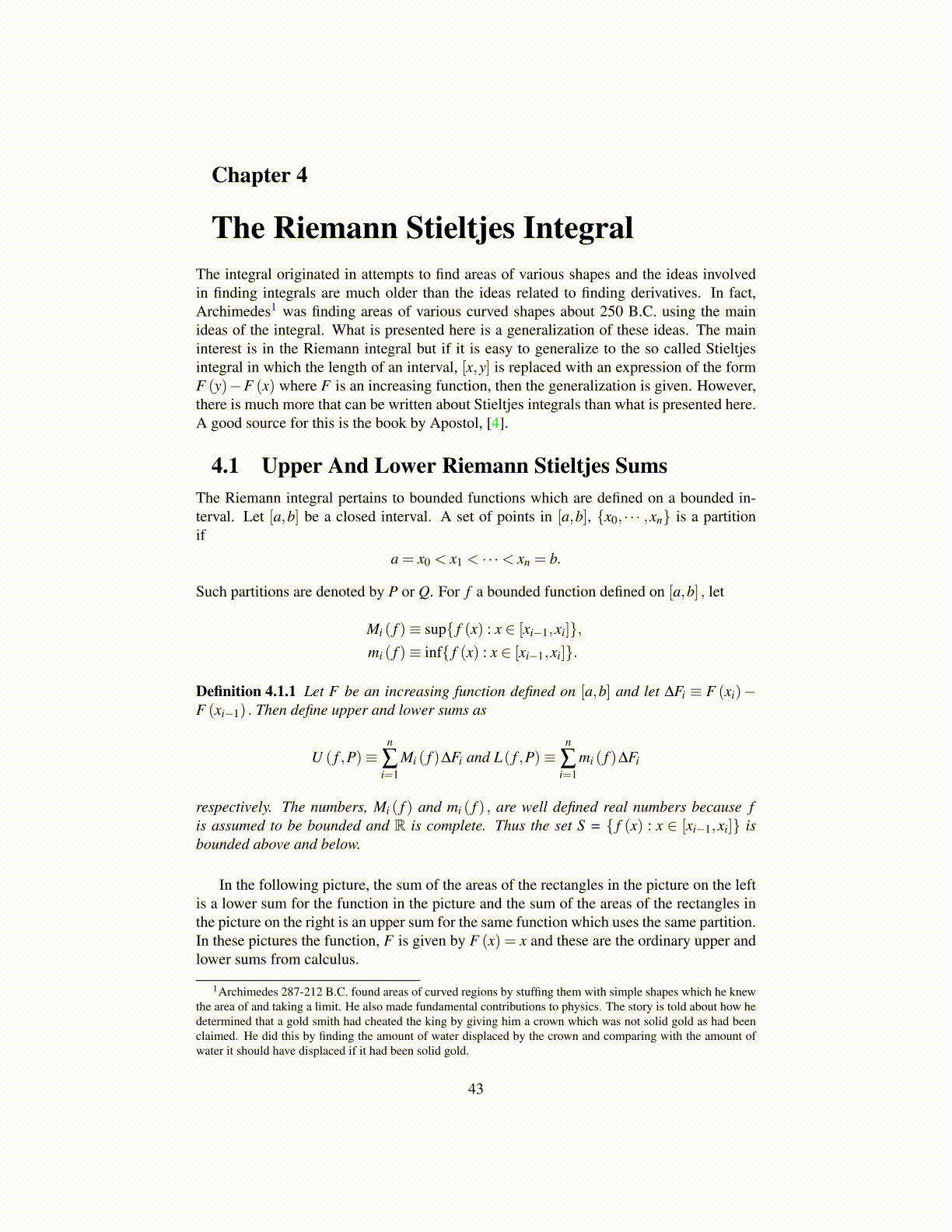
Chapter 4
The Riemann Stieltjes IntegralThe integral originated in attempts to find areas of various shapes and the ideas involvedin finding integrals are much older than the ideas related to finding derivatives. In fact,Archimedes1 was finding areas of various curved shapes about 250 B.C. using the mainideas of the integral. What is presented here is a generalization of these ideas. The maininterest is in the Riemann integral but if it is easy to generalize to the so called Stieltjesintegral in which the length of an interval, [x,y] is replaced with an expression of the formF (y)−F (x) where F is an increasing function, then the generalization is given. However,there is much more that can be written about Stieltjes integrals than what is presented here.A good source for this is the book by Apostol, [4].
4.1 Upper And Lower Riemann Stieltjes SumsThe Riemann integral pertains to bounded functions which are defined on a bounded in-terval. Let [a,b] be a closed interval. A set of points in [a,b], {x0, · · · ,xn} is a partitionif
a = x0 < x1 < · · ·< xn = b.
Such partitions are denoted by P or Q. For f a bounded function defined on [a,b] , let
Mi ( f )≡ sup{ f (x) : x ∈ [xi−1,xi]},mi ( f )≡ inf{ f (x) : x ∈ [xi−1,xi]}.
Definition 4.1.1 Let F be an increasing function defined on [a,b] and let ∆Fi ≡ F (xi)−F (xi−1) . Then define upper and lower sums as
U ( f ,P)≡n
∑i=1
Mi ( f )∆Fi and L( f ,P)≡n
∑i=1
mi ( f )∆Fi
respectively. The numbers, Mi ( f ) and mi ( f ) , are well defined real numbers because fis assumed to be bounded and R is complete. Thus the set S = { f (x) : x ∈ [xi−1,xi]} isbounded above and below.
In the following picture, the sum of the areas of the rectangles in the picture on the leftis a lower sum for the function in the picture and the sum of the areas of the rectangles inthe picture on the right is an upper sum for the same function which uses the same partition.In these pictures the function, F is given by F (x) = x and these are the ordinary upper andlower sums from calculus.
1Archimedes 287-212 B.C. found areas of curved regions by stuffing them with simple shapes which he knewthe area of and taking a limit. He also made fundamental contributions to physics. The story is told about how hedetermined that a gold smith had cheated the king by giving him a crown which was not solid gold as had beenclaimed. He did this by finding the amount of water displaced by the crown and comparing with the amount ofwater it should have displaced if it had been solid gold.
43